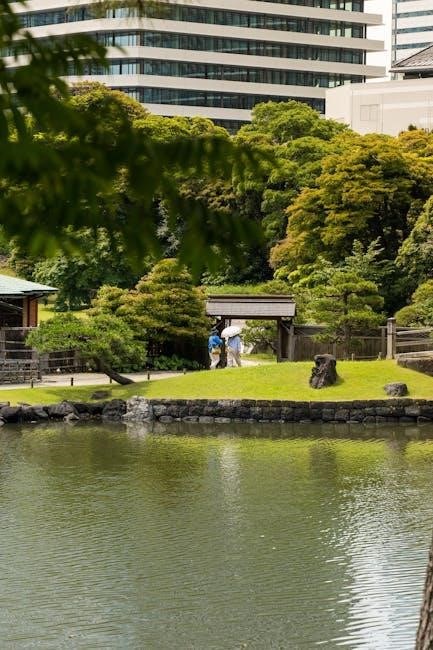Discover Japan’s vibrant culture and stunning landscapes through self-guided walking tours, offering flexibility and immersive experiences․ Explore iconic trails like Nakasendo and Kumano Kodo, connecting nature, history, and local traditions․
What Are Self-Guided Walking Tours?
Self-guided walking tours in Japan are independent adventures where travelers create their own pace, using pre-planned itineraries, maps, and resources․ These tours allow flexibility, enabling visitors to explore iconic trails like the Nakasendo and Kumano Kodo at their leisure․ Typically, they include accommodations, meals, and transportation, with options tailored to various fitness levels and budgets․ Popular operators like Walk Japan and Oku Japan offer such tours, catering to diverse preferences and ensuring a seamless experience․
Why Choose Self-Guided Tours in Japan?
Self-guided tours in Japan offer unparalleled flexibility, allowing travelers to explore at their own pace while immersing in the country’s rich culture and landscapes․ These tours provide independence, enabling visitors to personalize their experiences, from historic trails to vibrant cities․ With pre-arranged logistics like accommodations and itineraries, travelers can focus on enjoying their journey without the constraints of group schedules, creating a more intimate and memorable adventure․
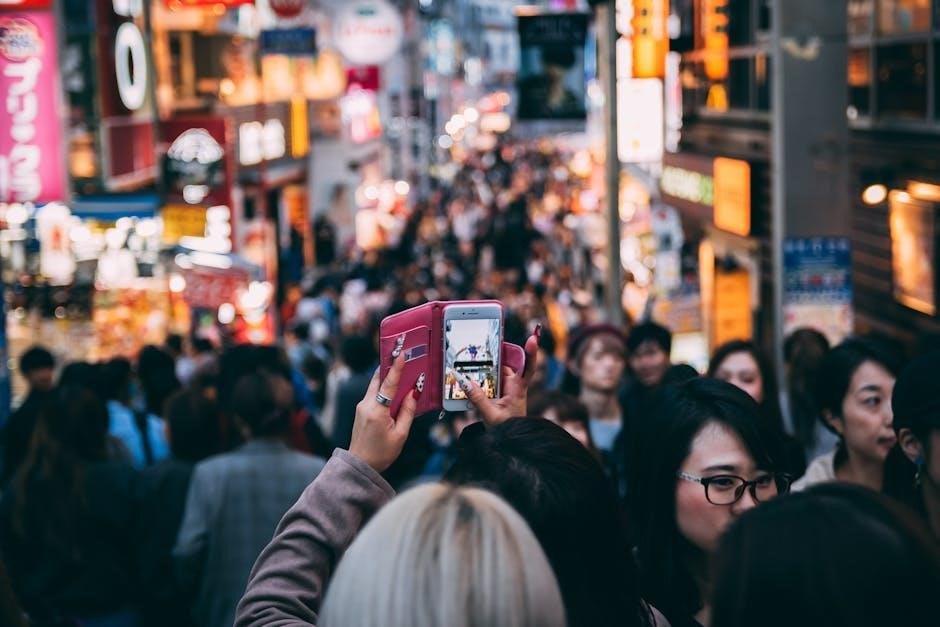
Popular Self-Guided Walking Trails in Japan
Discover iconic trails like the Nakasendo, a historic mountain path, and Kumano Kodo, a UNESCO-listed route, offering immersive cultural and natural experiences for walkers of all levels․
Nakasendo Trail: A Historic Path Through Mountains and Villages
The Nakasendo Trail, or “Central Mountain Route,” is a historic path connecting Tokyo and Kyoto through picturesque villages and mountains․ This moderate trail features gradual ascents, making it accessible for various fitness levels․ Travelers can enjoy stays in traditional inns, savoring local cuisine and cultural immersion․ Ideal for solo travelers or groups, the trail offers customizable itineraries, allowing walkers to explore Japan’s natural beauty and rich history at their own pace․
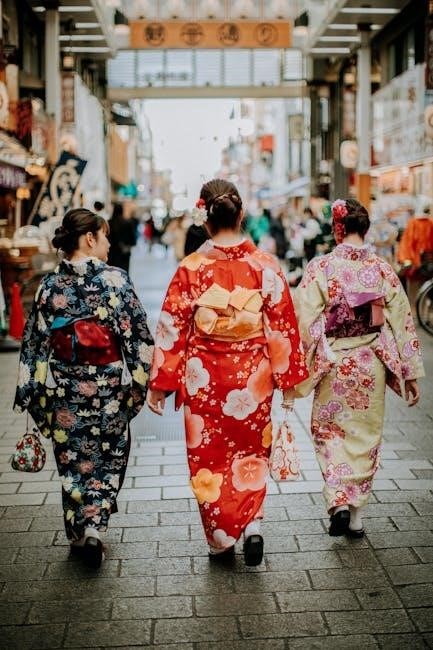
Kumano Kodo: Exploring UNESCO-Listed Sacred Landscapes
Kumano Kodo, a UNESCO World Heritage site, offers a spiritual journey through ancient forests and sacred shrines․ This self-guided trail in the Kii Peninsula features moderate to challenging terrain, with breathtaking views of waterfalls and coastal landscapes․ Walkers can experience Japan’s deep connection to nature and spirituality, staying in local inns and enjoying traditional meals․ It’s a perfect route for those seeking both adventure and cultural enrichment․
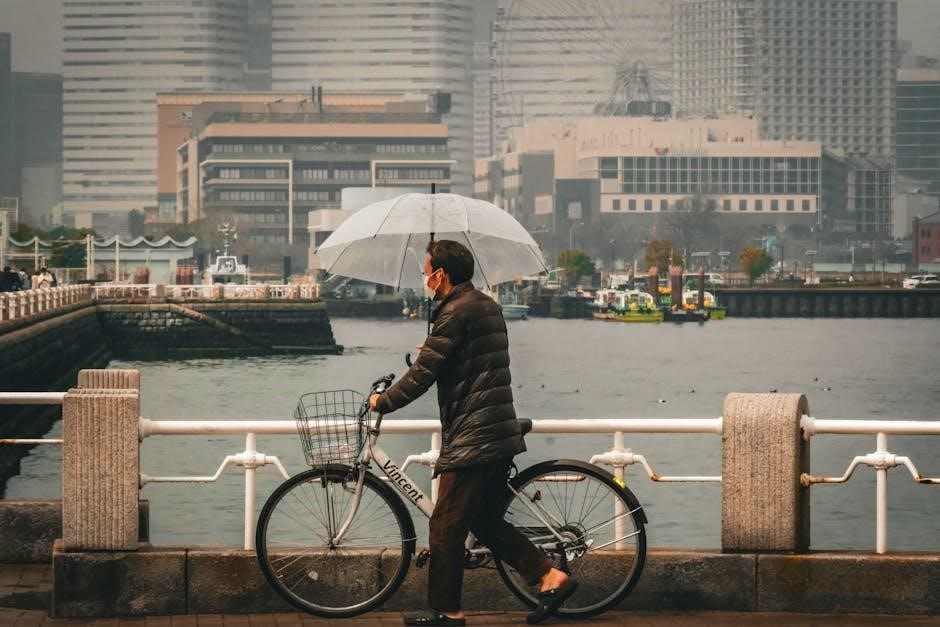
Planning and Preparing for Your Self-Guided Tour
Plan your self-guided tour with reputable agencies offering tailored itineraries, maps, and guides․ Customize trips to suit fitness levels and interests, ensuring a seamless, enriching experience in Japan․
Choosing the Right Trail for Your Fitness Level
Select trails that match your physical condition, from easy strolls to challenging hikes․ The Nakasendo Trail offers moderate paths with gradual ascents, while Kumano Kodo provides more rigorous terrain․ Consider guided itineraries or self-guided options tailored to your needs, ensuring a balanced mix of walking and cultural immersion․ Agencies like Walk Japan and Oku Japan offer curated routes, catering to various fitness levels and preferences for a personalized adventure․
When to Go: Seasonal Considerations
Japan’s seasons offer unique experiences for walkers․ Spring (March-May) brings cherry blossoms and mild weather, while autumn (September-November) boasts vibrant foliage․ Summer can be hot and humid, but festivals and green landscapes prevail․ Winter offers serene snow-covered trails, though some paths may close․ Plan according to your preference for weather and scenic beauty, ensuring a memorable journey through Japan’s diverse landscapes․
Packing Essentials: What to Bring on Your Walk
For a comfortable self-guided walking tour in Japan, pack sturdy, waterproof footwear, lightweight rain gear, and breathable clothing․ Bring a reusable water bottle, snacks, and a map․ Include a portable Wi-Fi device for navigation and a basic first-aid kit․ Seasonal items like sunscreen or a warm hat are essential, depending on the time of year․ Don’t forget a travel pillow for rest stops and a cash card for local purchases․
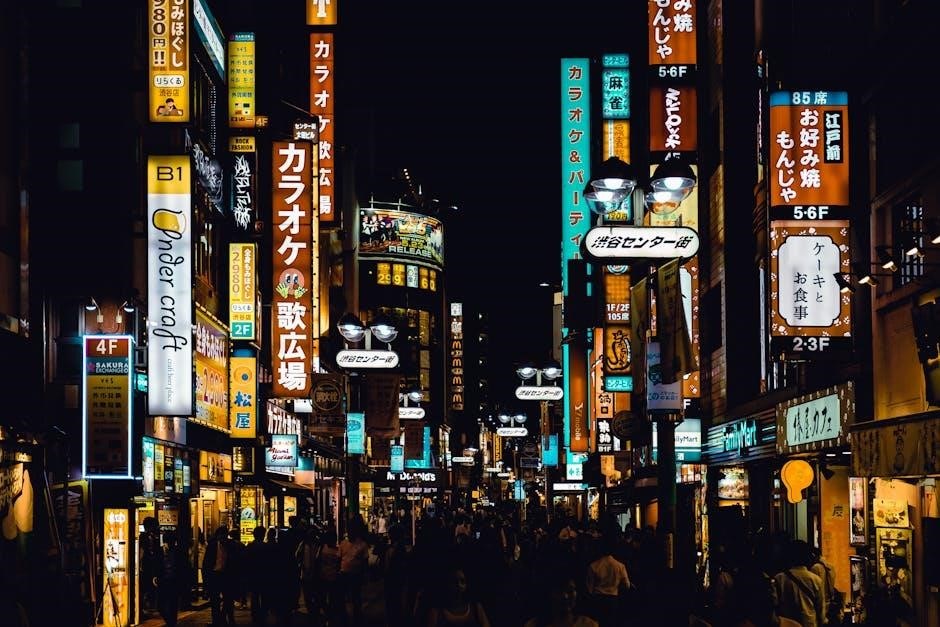
Navigation Tools: Maps, Apps, and Local Guides
Essential navigation tools for self-guided walking tours in Japan include detailed maps, GPS-enabled apps, and local guides․ Many tour operators provide route maps and route-finding apps to ensure smooth navigation․ Portable Wi-Fi devices are highly recommended for real-time directions and translations․ Local guides, though not always physical, offer insights into hidden gems and cultural nuances, enhancing your walking experience in Japan’s diverse landscapes and historic trails․
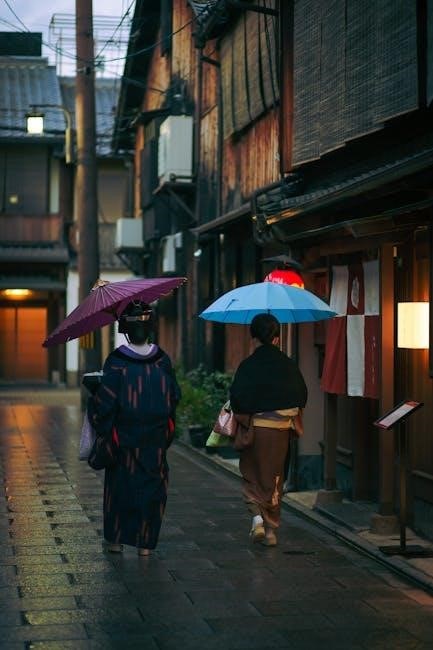
Accommodation Options for Self-Guided Walkers
From traditional ryokans to budget-friendly guesthouses, Japan offers diverse stays tailored for walkers․ Many accommodations are strategically located along trails, ensuring convenience and cultural immersion during your journey․
Traditional Ryokans and Minshuku: Immersive Cultural Stays
Experience authentic Japanese hospitality in traditional ryokans and minshuku, offering a glimpse into local culture․ These charming inns provide tatami floors, sliding doors, and seasonal cuisine, creating a serene atmosphere․ Staying in these accommodations allows walkers to connect with the community and enjoy a truly immersive cultural experience, enhancing their self-guided journey through Japan’s scenic trails and historic villages․
Budget-Friendly Guesthouses and Hostels
Budget-friendly guesthouses and hostels offer affordable and convenient stays for self-guided walkers․ These options provide basic yet comfortable amenities, ideal for travelers seeking cost-effective lodging․ Many guesthouses are centrally located, making it easy to access walking trails and local attractions․ They also cater to solo travelers and groups, offering a social atmosphere․ Staying in these accommodations allows walkers to save on expenses while still experiencing Japan’s unique culture and hospitality․
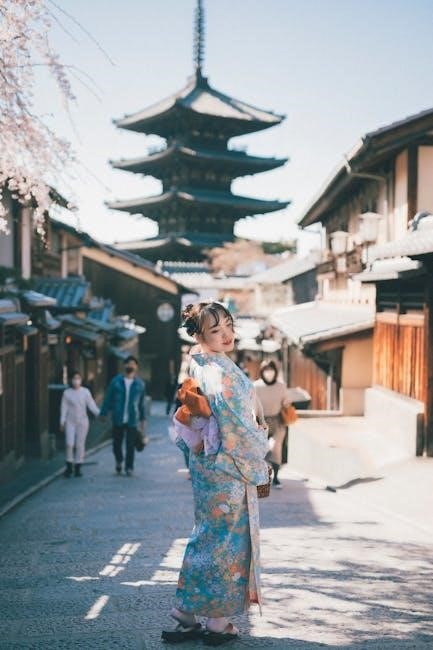
Cultural Experiences on Your Walking Tour
Immerse yourself in Japan’s rich culture by sampling local cuisine, exploring historic temples, and experiencing traditional village life along your self-guided walking journey․
Sampling Local Cuisine: Food and Drink Along the Way
Indulge in Japan’s diverse culinary delights during your self-guided walking tour․ Savor regional specialties like fresh seafood, mountain vegetables, and hearty miso soups․ Enjoy traditional Kaiseki meals at local inns, where each dish reflects seasonal flavors․ Don’t miss sake breweries and tea ceremonies, offering a taste of Japan’s rich food culture․ Every meal is a chance to connect with the local way of life and savor unforgettable flavors․
Understanding Japanese Etiquette for Temple and Village Visits
Respect local customs on your self-guided walking tour․ Bowing is a common greeting, and removing shoes is expected in temples and homes․ Dress modestly, especially at shrines․ Use chopsticks correctly, avoiding the ‘funeral style․’ Show appreciation for traditions and cultural practices․ These gestures enhance your experience and foster positive interactions with locals․
Safety and Support for Solo and Independent Travelers
Japan offers reliable safety and support for solo walkers․ Emergency services are accessible, and many trails have local assistance options, ensuring a secure and enjoyable journey․
Emergency Procedures and Medical Care Access
Japan’s emergency services are reliable, with 110 for police and 119 for fire/ambulance․ Medical care is accessible, with many hospitals in tourist areas offering English support․ Solo walkers can feel secure knowing help is readily available․ Support services often include emergency assistance, ensuring a safe and worry-free experience while exploring Japan’s beautiful trails․
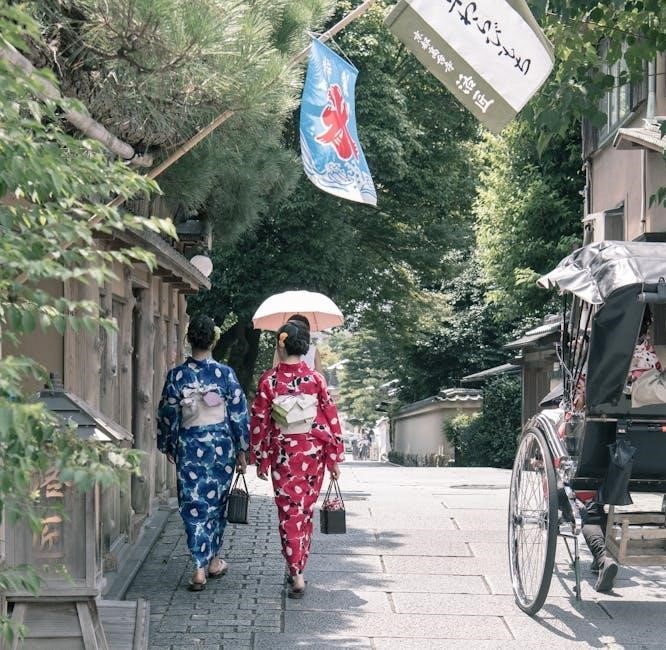
Support Services: Luggage Transfers and Local Assistance
Self-guided walkers in Japan can enjoy hassle-free journeys with luggage transfer services, allowing you to hike unencumbered․ Many tour operators offer door-to-door baggage transport, ensuring your luggage awaits at each accommodation․ Additionally, local assistance is readily available, providing guidance and support when needed․ These services enhance convenience, letting you focus on the scenic beauty and cultural richness of Japan’s trails without logistical stress․
Seasonal Variations in Self-Guided Walking Tours
Experience Japan’s diverse beauty with seasonal self-guided tours, from spring’s cherry blossoms to autumn’s vibrant foliage, each offering unique cultural and natural highlights along the trails․
Spring Blooms: Walking Through Cherry Blossoms
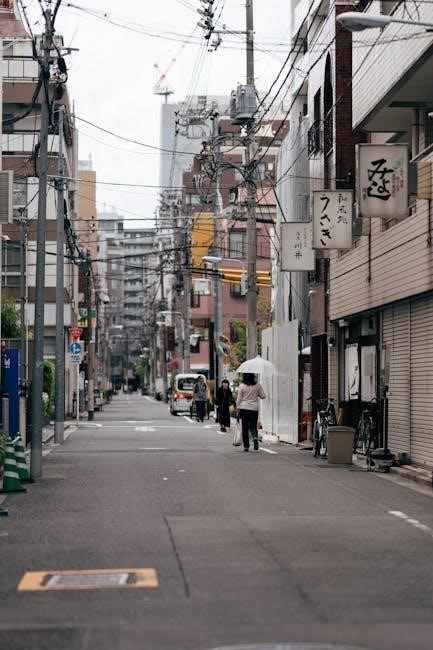
Spring in Japan is a magical time for self-guided walkers, with cherry blossoms painting the landscapes in soft pink hues․ Popular trails like the Nakasendo and Kumano Kodo are particularly stunning during this season․ The blooming sakura creates a serene backdrop for hikers, offering unforgettable photo opportunities and a deeper connection to Japan’s natural beauty․ Many walkers also enjoy sampling seasonal local cuisine and visiting temples adorned with blossoms, enhancing their cultural experience․
Autumn Hues: Exploring Japan’s Vibrant Fall Colors
Experience Japan’s breathtaking autumn foliage on self-guided walking tours, where vibrant red, orange, and yellow leaves transform landscapes․ Trails like the Nakasendo and Kumano Kodo offer stunning views of maple and beech trees․ The season also brings unique cultural experiences, such as harvest festivals and seasonal delicacies, allowing walkers to immerse themselves in local traditions while enjoying nature’s colorful display․
The Future of Self-Guided Walking Tours in Japan
Japan’s self-guided walking tours are growing, driven by sustainable tourism and demand for independent travel, offering immersive cultural and natural experiences with eco-friendly practices․
Post-Pandemic Trends: Japan Opens to Independent Travelers
Following the pandemic, Japan has eased restrictions, welcoming self-guided travelers․ This shift offers greater flexibility and personalized experiences, aligning with the growing demand for independent exploration and sustainable tourism practices․
Sustainable Tourism: Eco-Friendly Walking Tours
Eco-friendly walking tours in Japan emphasize minimal environmental impact while promoting cultural preservation․ Operators like Oku Japan and Walk Japan focus on responsible travel, supporting local communities and sustainable practices․ These tours often include eco-conscious accommodations and reduced carbon footprints, aligning with global sustainable tourism goals․ By choosing such tours, travelers contribute to Japan’s environmental and cultural heritage preservation while enjoying immersive, authentic experiences․
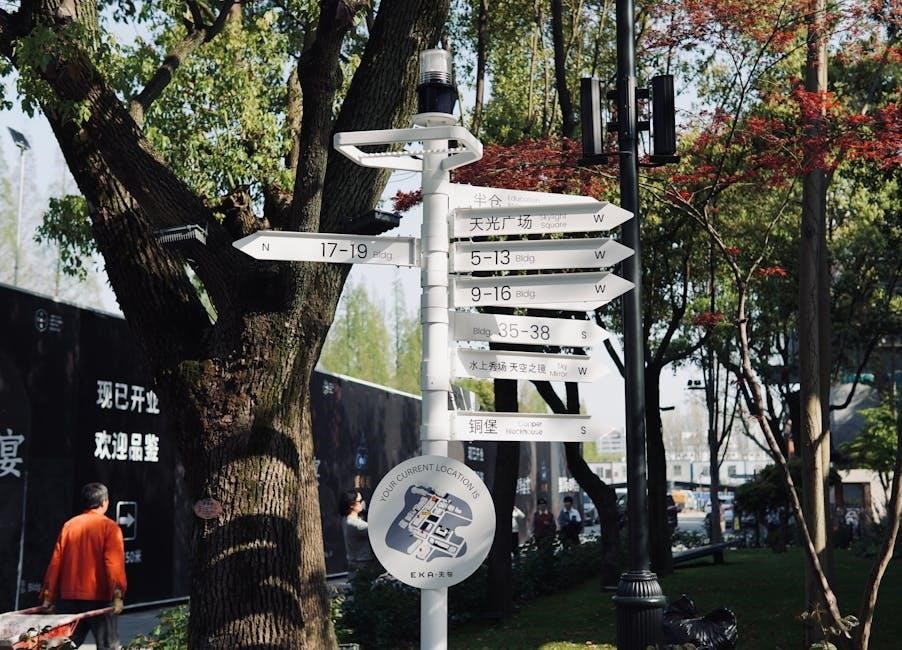
Self-guided walking tours in Japan offer a unique blend of cultural immersion, natural beauty, and personal freedom․ Plan thoughtfully, embrace local traditions, and create unforgettable memories․
Final Tips for a Memorable Self-Guided Walking Tour
Plan according to your fitness level, use reliable navigation tools, and pack essentials like comfortable shoes and layers․ Embrace local customs, try regional cuisine, and stay in traditional accommodations for an authentic experience․ Respect nature and temples, and consider seasonal highlights like cherry blossoms or autumn foliage․ Stay flexible, carry a portable Wi-Fi device, and enjoy the serenity of Japan’s trails․ Safe travels!
